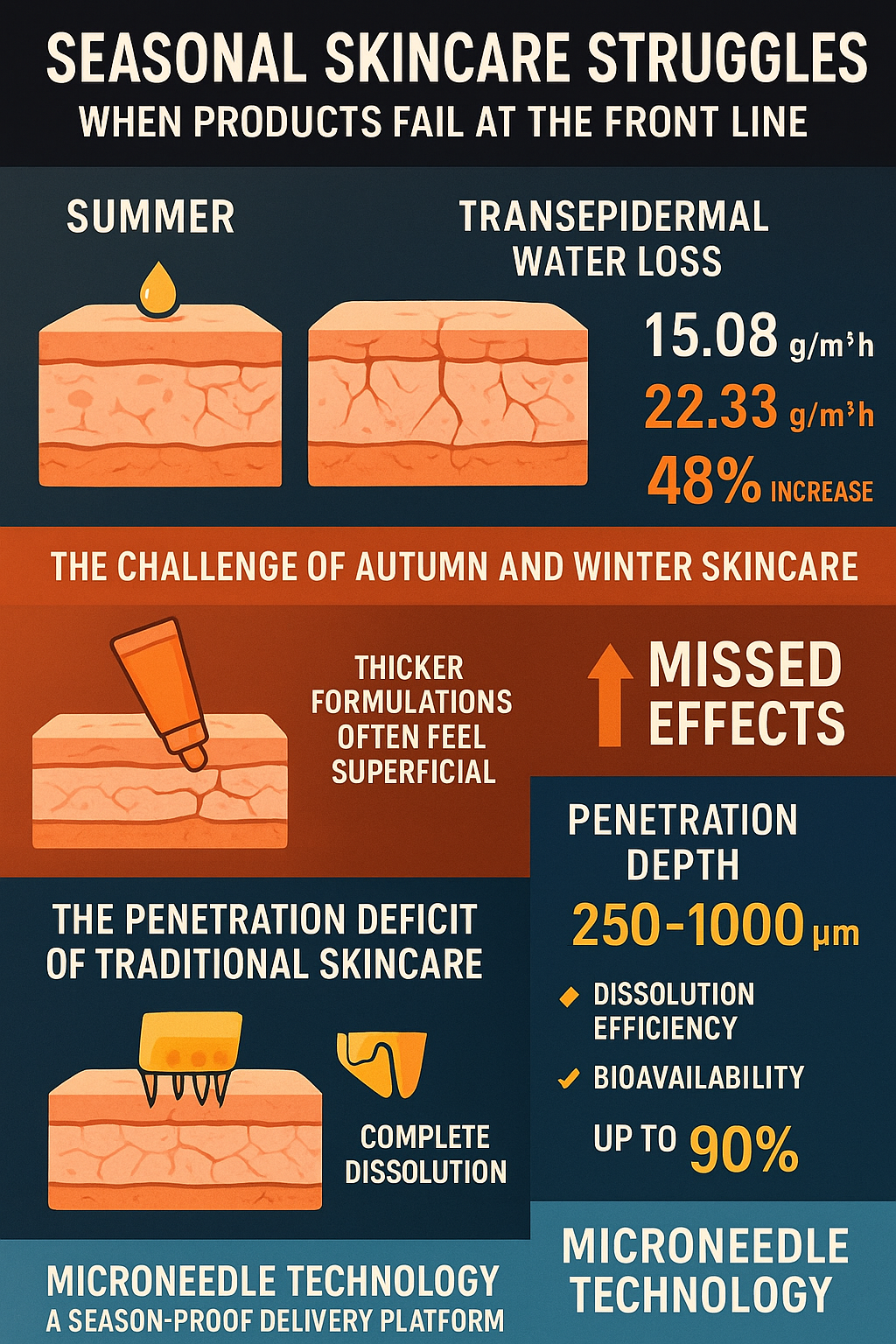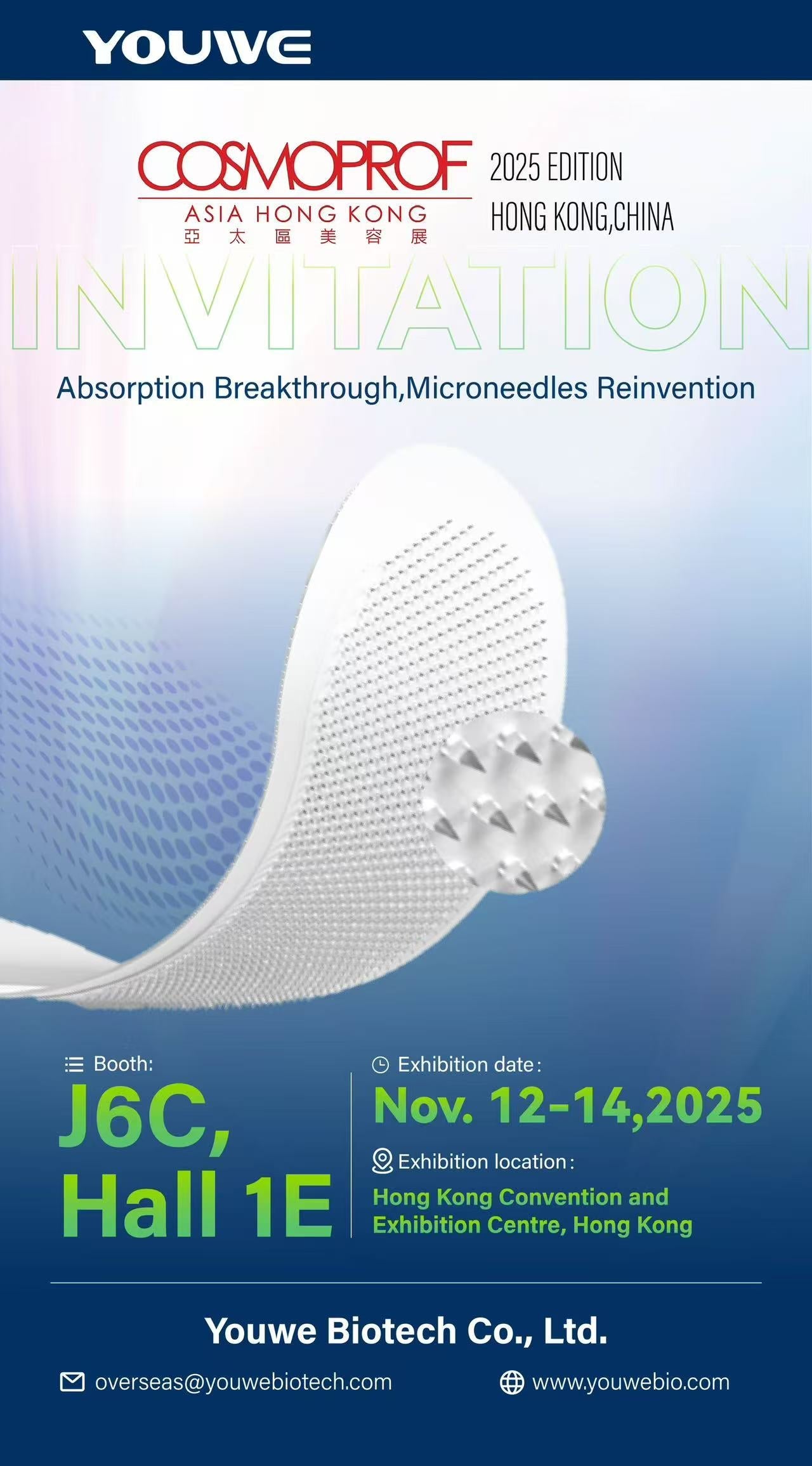The Quantified Reality of Seasonal Skin Dysfunction
Clinical evidence consistently shows that skin barrier function is highly sensitive to environmental transitions. Transepidermal water loss (TEWL) rises from ~15.08 g/m²/h in summer to ~22.33 g/m²/h in winter—a 48% increase (p = 5.0E-05). This physiological shift explains why a lightweight summer routine may fail under winter’s dry indoor heating, and why rich winter creams often feel suffocating in humid summer months.
Winter’s Measured Impact on Skin Integrity
When exposed to typical winter indoor environments (25°C, <20% humidity) for just 6 hours, skin shows measurable deterioration: roughness, redness, and fine lines all increase significantly. Such quantified changes highlight why static formulations cannot adapt to seasonal stressors.
The Challenge of Autumn and Winter Skincare
Thicker autumn and winter formulations are often designed for maximum hydration. They contain high water content and rich moisturizing ingredients aimed at combating dryness and barrier damage. Yet despite these efforts, much of their potency is blocked by the stratum corneum—the skin’s outermost layer—leaving effects largely superficial. Users may feel moisturized temporarily, but deep skin layers often remain dehydrated, making the true impact of these products inconsistent. This limitation underscores the need for delivery methods that can bypass surface barriers and reach the layers where hydration and repair are most needed.
The Penetration Deficit of Traditional Skincare
Topical products primarily act within the outer 10–20 μm of the stratum corneum. Seasonal barrier variability further limits consistency, leaving actives stranded at the surface when deeper intervention is needed. Consumer behavior reflects this gap: many skincare users switch routines with the seasons, seeking solutions that traditional products cannot reliably provide.
Microneedle Technology: A Season-Proof Delivery Platform
Microneedle systems address the seasonal gap not by changing formulations but by changing delivery.
Penetration depth: 250–1000 μm, representing a 200–800% increase compared to topical products.
Dissolution efficiency: Complete dissolution within minutes, ensuring consistent release.
Bioavailability: Up to 90% of theoretical penetration depth achieved, bypassing surface barrier variability.
Clinical and Environmental Relevance
Studies demonstrate that microneedle-created microchannels (120–270 μm) deliver compounds more effectively under variable humidity and temperature conditions. Unlike conventional formulations that fail when humidity drops or heating raises TEWL, microneedle pathways remain stable, enabling consistent performance.
Beyond Seasonal Products: Toward Adaptive Delivery
Market data shows increasing investment in seasonal-specific launches. Yet, the true solution may not be more seasonal formulations, but delivery platforms resilient to environmental change. Microneedle technology exemplifies this shift—moving from ingredient-centered strategies to delivery-centered innovation.
A Data-Backed Future for Skincare
The evidence is clear: TEWL varies by up to 84% across seasons, traditional topicals deliver <2% penetration, and consumer behavior reflects ongoing dissatisfaction. Microneedle technology demonstrates a quantifiable ability to overcome these seasonal limits, offering a path toward consistent, adaptive skincare.







Leave a comment
All comments are moderated before being published.
This site is protected by hCaptcha and the hCaptcha Privacy Policy and Terms of Service apply.